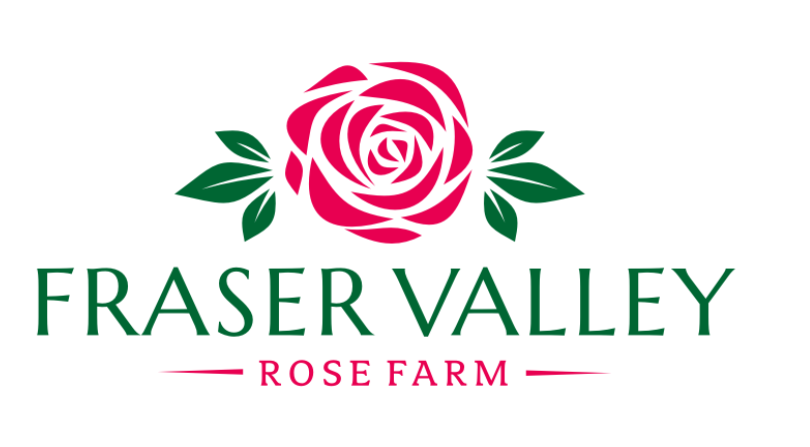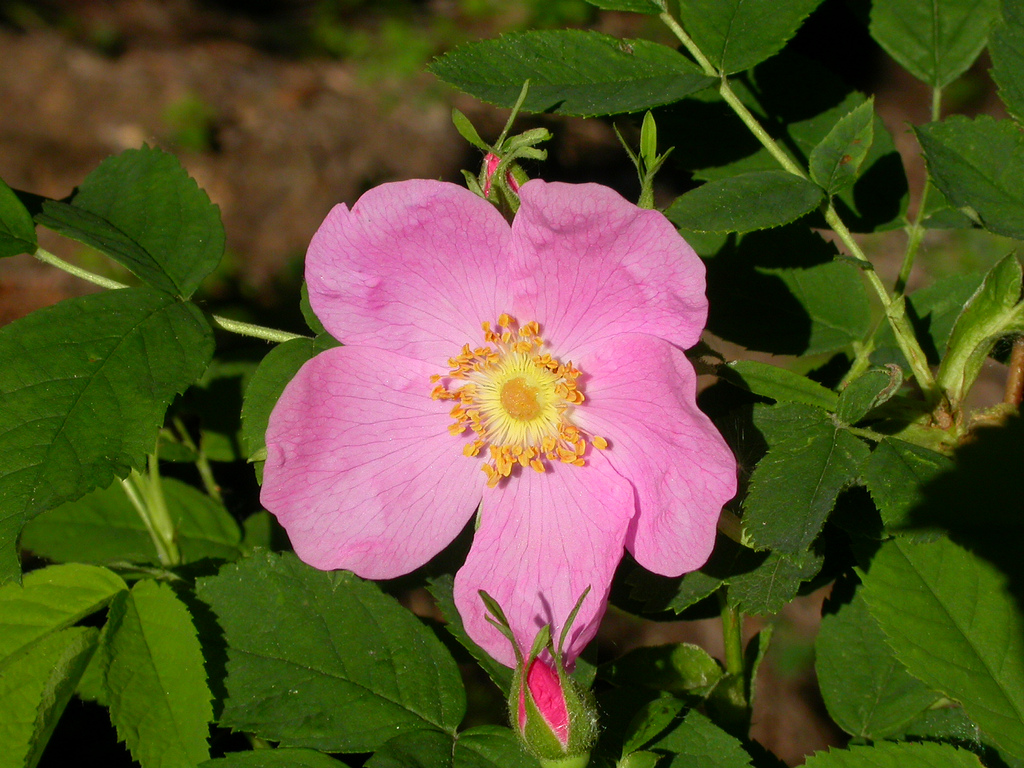How do species roses compare to the ones hybridized for gardens and cutting?
Very different, but beautiful in their own way, I’d answer. Have a look at one of our native roses, Rosa woodsii:
It has <gasp> only five petals. Calm yourself. This isn’t a mistake. The garden has one set of rules, and nature has another.
In nature, a plant’s ability to survive and make babies depends on it not wasting resources. Extra petals are a luxury – particularly when they get in the way of the real business on the flower. That is, the business of getting pollen where it needs to go. Nature selects for the simplest structure that will get the job done – which seems like a strange rule, considering some of the complicated flowers and other plant bits that you can find in nature – but in the case of the rose, a five-petaled flower seems to do the trick for most species. The roses we know in the garden are more lavish because we’ve gone in there and messed with them, selecting for big, complicated flowers.
While I’m on a bit of a run here, let me write a bit about reblooming. There’s a reason many “unimproved” plants bloom in one large flush, don’t you think? A native wild rose like Rosa woodsii is trying to attract the attention of pollinators, and it has to do so within the context of other plants blooming around it. It also has to do the job early enough in the season to ripen the seeds before growth ceases in fall and winter. A big flush of blooms all at once in June or July has proven to be a successful strategy in our climate.
There may be places in the world where a reblooming strategy works well. I suspect it would be in a warmer climate, where the rose may have several attempts over a longer season to set seed. Whatever the conditions were that allowed generations of reblooming roses to thrive, they were specific to a certain species in its own climate.
Rose breeders found this gene (in China roses, for the most part), and decided to breed it into everything. So now, practically all cultivated roses have been bred with some attention to this genetic trait. This is definitely the case in modern roses, and in a fair amount of old garden roses as well.
There’s a trade-off for all this bling, I’m afraid. Don’t get me wrong. I love roses with many petals. I love reblooming roses. I love roses that are bred for extraordinary scent, color, bloom form, and for other interesting traits (think moss) that have nothing to do with what would make a rose successful in nature. But I know there’s a trade-off when I choose these “expensive” traits. For one thing, a plant can only produce so much energy (sugar). When it spends all this energy on flowers, it has less energy available for roots, leaves, and the hardening off of stems to prepare for winter.
This bears out in my own experience, by the way. I grow a mix of roses with a single bloom period, and those that rebloom all season. Come winter, I watch those roses with the strongest impulses to rebloom, and they’re still foolishly wasting their energy on succulent new growth and flower buds that will never open. My rugosa roses have long since let their leaves go yellow and drop. Their stems have faded to grey to signal readiness for harsh cold. ‘Playboy’ is still ready to party, and pays the price when the cold winds come.
Another trade-off in the amount of attention hybridized roses need from the gardener. With the strong breeding emphasis on large, repeat blooming flowers, many hybrids are not able to perform well unless they’re given special conditions. Gardeners are left to supply these relative weaklings with what they need to support these flowers; high levels of fertilizer, regular water, protection from pests… and just about anything else you can think of. Some are so weak on their own that they never perform to “expectations” if they’re grown on their own roots – they need to be grafted onto the stronger growing roots of another rose (usually a species rose!) in order to produce those perfect blooms.
That brings us back to species roses. These are the real deal. They’re still relatively pure in purpose. Most often, they have single (five petaled) flowers in basic shades of pink or white. Red and yellow are out there too, but they’re less common. The majority of these roses are from temperate climates in the northern hemisphere, so they bloom once, set a big crop of hips, and are hardy enough to stand a tough winter without much die-back. They don’t generally need much input from the gardener, and while their flowers may be less impressive individually, I dare you to say that the single heavy flush of flowers on Rosa filipes ‘Kiftsgate’ (or, for that matter, the subsequent crop of hips) is any less impressive than what a pampered hybrid tea can produce all season.
Some are excellent specimens – Rosa moyesii with it’s large stature and urn-shaped hips – Rosa roxburghii has hips that look like chestnuts and also an attractively peeling bark. Others are fantastic hedge or barrier plants – Rosa eglanteria and also a variety of Rosa gallica (‘Hansen’s Hedge’) come to mind. Yet other species roses are rampant climbers or ramblers. Whatever their use in the garden, I find the species roses to be strong performers, even if they don’t match the modern idea of a rose.

